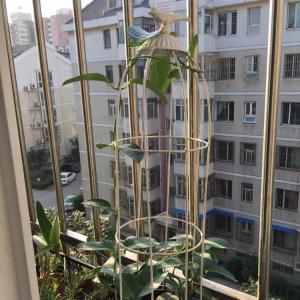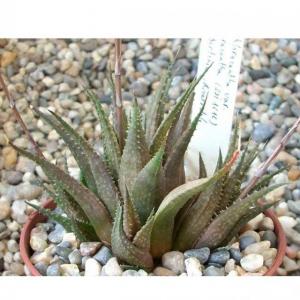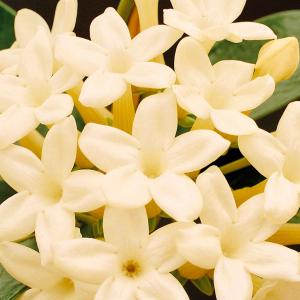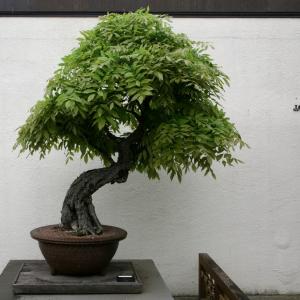文章
Dummer. ゛☀
2017年09月29日

Scientific Name
Pieris floribunda (Pursh) Benth. & Hook. f.

Common Names
Mountain Fetterbush, Mountain Andromeda, Mountain Pieris
Synonyms
Andromeda floribunda (basionym), Andromeda montana, Andromeda vaccinifolia, Leucothoe floribunda, Portuna floribunda, Zenobia floribunda
Scientific Classification
Family: Ericaceae
Genus: Pieris

Flower
Color: White
Bloom Time: Autumn
Description
Pieris floribunda is a bushy shrub up to 6 feet (1.8 m) tall, with oval shiny, leathery leaves which are normally evergreen, but may shed in a harsh winter to brown and persist until spring. It has erect or erect with just slightly nodding panicles of white, urn-shaped flowers that form in autumn as erect pink buds. The brown, dry fruit is a slightly angled globular capsule up to 0.5 inch (13 mm) long in autumn and persisting until late April. The gray-brown bark is shaggy and peeling when mature.
Hardiness
USDA hardiness zone 4a to 8b: from −30 °F (−34.4 °C) to 20 °F (−6.7 °C).

How to Grow and Care
As they are originally from a forested habitat they do best in dappled shade. Strong sun in early spring can burn the tender new growth. They will not do too well in full shade as they won’t produce as many flowers and the color of the new growth won’t be as intense. They need well-drained but moisture retentive humus-rich acid soil. If you have an alkaline soil you will have to grow it in a pot; you can add ericaceous compost and feed and mulch with pine needles but it will only be temporary and an alkaline soil will always be an alkaline soil.
They are a hardy shrub but it may need some protection from late frosts which will burn the new growth and flowers. The frost probably won’t kill the plant but it will mar the spring display which is usually the main reason it is grown.
Plant them to the same depth as they are in the pot and water well. Keep an eye on the watering in the first season, particularly if there is a long dry spell.
Origin
Native to the eastern United States, primarily the southern Appalachian Mountains in the States of Tennessee, North and South Carolina, Georgia, Virginia and West Virginia.
Pieris floribunda (Pursh) Benth. & Hook. f.

Common Names
Mountain Fetterbush, Mountain Andromeda, Mountain Pieris
Synonyms
Andromeda floribunda (basionym), Andromeda montana, Andromeda vaccinifolia, Leucothoe floribunda, Portuna floribunda, Zenobia floribunda
Scientific Classification
Family: Ericaceae
Genus: Pieris

Flower
Color: White
Bloom Time: Autumn
Description
Pieris floribunda is a bushy shrub up to 6 feet (1.8 m) tall, with oval shiny, leathery leaves which are normally evergreen, but may shed in a harsh winter to brown and persist until spring. It has erect or erect with just slightly nodding panicles of white, urn-shaped flowers that form in autumn as erect pink buds. The brown, dry fruit is a slightly angled globular capsule up to 0.5 inch (13 mm) long in autumn and persisting until late April. The gray-brown bark is shaggy and peeling when mature.
Hardiness
USDA hardiness zone 4a to 8b: from −30 °F (−34.4 °C) to 20 °F (−6.7 °C).

How to Grow and Care
As they are originally from a forested habitat they do best in dappled shade. Strong sun in early spring can burn the tender new growth. They will not do too well in full shade as they won’t produce as many flowers and the color of the new growth won’t be as intense. They need well-drained but moisture retentive humus-rich acid soil. If you have an alkaline soil you will have to grow it in a pot; you can add ericaceous compost and feed and mulch with pine needles but it will only be temporary and an alkaline soil will always be an alkaline soil.
They are a hardy shrub but it may need some protection from late frosts which will burn the new growth and flowers. The frost probably won’t kill the plant but it will mar the spring display which is usually the main reason it is grown.
Plant them to the same depth as they are in the pot and water well. Keep an eye on the watering in the first season, particularly if there is a long dry spell.
Origin
Native to the eastern United States, primarily the southern Appalachian Mountains in the States of Tennessee, North and South Carolina, Georgia, Virginia and West Virginia.
0
0
文章
Dummer. ゛☀
2017年09月25日

Scientific Name
Rosa rubiginosa L.

Common Names
Sweet Briar, Sweet Briar Rose, Sweet Brier, Eglantine, Eglantine Rose
Synonyms
Chabertia rubiginosa, Laggeria eglanteria, Rosa x almeriensis, Rosa x braunii, Rosa eglanteria, Rosa floribunda, Rosa moutinii, Rosa rugibinosa, Rosa uliginosa
Scientific Classification
Family: Rosaceae
Subfamily: Rosoideae
Genus: Rosa

Flower
Color: Pink with a white base
Bloom Time: Late spring to mid summer
Description
Rosa rubiginosa is a dense, deciduous shrub up to 10 feet (3 m) high and across, with the stems bearing numerous hooked prickles. The foliage has a strong apple-like fragrance. The leaves are pinnate, up to 3.6 inches (9 cm) long, with 5 to 9 rounded to oval leaflets with a serrated margin, and numerous glandular hairs. The flowers are up to 1.2 inches (3 cm) in diameter, the 5 petals being pink with a white base, and the numerous stamens yellow. The flowers are produced in clusters of 2 to 7 together, from late spring to mid summer. The fruit is a globose to oblong red hip, up to 0.8 inch (2 cm) diameter.
Hardiness
USDA hardiness zone 4a to 9b: from −30 °F (−34.4 °C) to 30 °F (−1.1 °C).

How to Grow and Care
When growing roses, it’s important to choose a site receiving at least 6 hours of sun each day. Rose bushes must also be located in well-drained, fertile soil. Plant dormant roses in early spring (or fall). Potted plants can be planted any time between spring and fall, but preferably spring.
If you’re planting bare root roses, presoak them in water for at least 24 hours prior to placing them in the ground.
Both bare root and potted rose bushes need to be planted about 2 feet (60 cm) deep, with the hole large enough to accommodate the roots. Backfill the hole with soil, adding some well-rotted manure in with it and water thoroughly. Then mound up additional soil around the base of the plant. Note that this is not necessary for actively growing roses.
Caring for rose bushes is important to their overall health and vigor, especially when it comes to watering. Roses require at least an inch (2.5 cm) of water weekly throughout their growing season, beginning in spring or following spring planting.
Origin
Native to Europe and western Asia.
Rosa rubiginosa L.

Common Names
Sweet Briar, Sweet Briar Rose, Sweet Brier, Eglantine, Eglantine Rose
Synonyms
Chabertia rubiginosa, Laggeria eglanteria, Rosa x almeriensis, Rosa x braunii, Rosa eglanteria, Rosa floribunda, Rosa moutinii, Rosa rugibinosa, Rosa uliginosa
Scientific Classification
Family: Rosaceae
Subfamily: Rosoideae
Genus: Rosa

Flower
Color: Pink with a white base
Bloom Time: Late spring to mid summer
Description
Rosa rubiginosa is a dense, deciduous shrub up to 10 feet (3 m) high and across, with the stems bearing numerous hooked prickles. The foliage has a strong apple-like fragrance. The leaves are pinnate, up to 3.6 inches (9 cm) long, with 5 to 9 rounded to oval leaflets with a serrated margin, and numerous glandular hairs. The flowers are up to 1.2 inches (3 cm) in diameter, the 5 petals being pink with a white base, and the numerous stamens yellow. The flowers are produced in clusters of 2 to 7 together, from late spring to mid summer. The fruit is a globose to oblong red hip, up to 0.8 inch (2 cm) diameter.
Hardiness
USDA hardiness zone 4a to 9b: from −30 °F (−34.4 °C) to 30 °F (−1.1 °C).

How to Grow and Care
When growing roses, it’s important to choose a site receiving at least 6 hours of sun each day. Rose bushes must also be located in well-drained, fertile soil. Plant dormant roses in early spring (or fall). Potted plants can be planted any time between spring and fall, but preferably spring.
If you’re planting bare root roses, presoak them in water for at least 24 hours prior to placing them in the ground.
Both bare root and potted rose bushes need to be planted about 2 feet (60 cm) deep, with the hole large enough to accommodate the roots. Backfill the hole with soil, adding some well-rotted manure in with it and water thoroughly. Then mound up additional soil around the base of the plant. Note that this is not necessary for actively growing roses.
Caring for rose bushes is important to their overall health and vigor, especially when it comes to watering. Roses require at least an inch (2.5 cm) of water weekly throughout their growing season, beginning in spring or following spring planting.
Origin
Native to Europe and western Asia.
0
0
文章
Miss Chen
2017年08月10日


Floribunda roses present clusters of two to three blooms on each cane, growing from 2 to 4 feet tall. These lovely specimens are a hybrid created by crossing hybrid tea roses with polyanthas. Bred to be hardy and disease-resistant, they require minimal maintenance. With just a little effort, you can have glorious blooms all season long.
Floribunda Rose Care
Step 1
Prune canes once leaf buds appear in the spring to stimulate plant growth. Cut each cane back by half. Use sharp scissors or clippers.
Step 2
Fertilize floribunda roses each spring once new growth appears. Use a rose-specific fertilizer and follow label directions carefully. Rose fertilizer is available as a liquid concentrate and as pellets. Liquid concentrate is mixed with water and poured at the base of the plant. Pellet form fertilizer is shaken on the soil around the plant. Either application is effective; pellets are applied less often than the liquid concentrate.
Step 3
Work shredded leaves, compost or other organic material into the ground around the rose bush. Do not disturb the plant's roots.

Step 4
Shovel a 1- to 3-inch layer of mulch on top of the soil surrounding the floribunda rose; this helps the plant retain moisture and limits weed growth. Avoid laying mulch up against the base of plant as that could cause stem rot.
Step 5
Water plant once or twice a week, supplementing the natural rainfall. Water deeply and aim for the base of the plant. Roses require 4-5 gallons of water per week during the growing season. Shallow watering may cause the development of weak roots.
Step 6
Prune the rose bush as flowers finish blooming. This will stimulate new growth. Once a flower is done blooming, cut back that cane. Perform the cut with sharp scissors or clippers and aim for a spot directly above a leaf bud. New growth will appear just below the cut.
0
0
文章
Miss Chen
2017年08月10日

Roses are the classic flowers of romance and elegance, and purple roses can make a remarkable statement in a bouquet or garden. This color is available in all types of rose plant cultivars (cultivated varieties), including hybrid tea, floribunda and climbing. Fragrance, shape and purple shade all vary among types, and sometimes even depending on the nutrients available to the rose from the soil and fertilizer. Purple roses may also be grandiflora, miniature or hedge roses.

Shades of Purple
Purple roses, regardless of type, divide into three main categories by shade: lavender, mauve and purple. Lavender roses are the palest shade, with more blue than red defining the purple color, although they can sometimes appear pinkish in photos. Mauve has more red than blue in the purple, sometimes resembling a burgundy color, but still truly purple. Finally, true purple roses are a perfect combination of red and blue, creating an eye-catching, deep purple color.
Purple Hybrid Tea Roses
Rose enthusiasts developed hybrid tea varieties by cross-breeding two kinds of roses. These roses grow tall on straight stems, usually with a single blossom per stem. They are ideal as cut flowers or specimen plants. Varieties of purple tea roses include Silver Star, Blue Moon, Blue Nile, Blue River, Stainless Steel and Neptune.
Purple Floribunda and Grandiflora Roses
Floribunda roses tend to be shrubby, with a profusion of blossoms on every stem, sometimes tending to grow in clusters. They are a modern rose developed by cross-breeding two other rose types. Purple floribunda varieties include Cotillion, Burgundy Iceberg and Enchanted Evening.
Grandifloras are rose bushes similar in form to floribundas, but tend to be larger, with their flowers taking more of a hybrid-tea-rose shape. Melody Parfumee and Sweetness are both grandiflora cultivars.
Purple Climbing Roses
Any variety of rose, including floribunda and hybrid tea, can develop a climbing form. The canes of climbing roses are longer and more flexible than those of bush forms and can reach heights of 8 feet or more, although shorter ones are also available. Night Owl is a purple climbing rose.

Purple Miniature Roses
Measuring 6 to 36 inches in height, miniature roses are often sold as houseplants, although they descend from outdoor shrubs. Most modern miniature roses are repeat bloomers, rather than the single bloomers they once were. Demitasse, Sweet Chariot and Blue Peter are three varieties of modern miniature roses.
Shrub and Purple Hedge Roses
A shrub rose is simply a type of rose that takes on a shrub form, while hedge roses are roses--usually a shrub rose type--used to form a hedge or border. Lavender Dream, Lavender Lassie, Blue Boy and Outta the Blue are purple shrub roses, and Fragrant Lavender Simplicity® is a purple hedge rose.

Shades of Purple
Purple roses, regardless of type, divide into three main categories by shade: lavender, mauve and purple. Lavender roses are the palest shade, with more blue than red defining the purple color, although they can sometimes appear pinkish in photos. Mauve has more red than blue in the purple, sometimes resembling a burgundy color, but still truly purple. Finally, true purple roses are a perfect combination of red and blue, creating an eye-catching, deep purple color.
Purple Hybrid Tea Roses
Rose enthusiasts developed hybrid tea varieties by cross-breeding two kinds of roses. These roses grow tall on straight stems, usually with a single blossom per stem. They are ideal as cut flowers or specimen plants. Varieties of purple tea roses include Silver Star, Blue Moon, Blue Nile, Blue River, Stainless Steel and Neptune.
Purple Floribunda and Grandiflora Roses
Floribunda roses tend to be shrubby, with a profusion of blossoms on every stem, sometimes tending to grow in clusters. They are a modern rose developed by cross-breeding two other rose types. Purple floribunda varieties include Cotillion, Burgundy Iceberg and Enchanted Evening.
Grandifloras are rose bushes similar in form to floribundas, but tend to be larger, with their flowers taking more of a hybrid-tea-rose shape. Melody Parfumee and Sweetness are both grandiflora cultivars.
Purple Climbing Roses
Any variety of rose, including floribunda and hybrid tea, can develop a climbing form. The canes of climbing roses are longer and more flexible than those of bush forms and can reach heights of 8 feet or more, although shorter ones are also available. Night Owl is a purple climbing rose.

Purple Miniature Roses
Measuring 6 to 36 inches in height, miniature roses are often sold as houseplants, although they descend from outdoor shrubs. Most modern miniature roses are repeat bloomers, rather than the single bloomers they once were. Demitasse, Sweet Chariot and Blue Peter are three varieties of modern miniature roses.
Shrub and Purple Hedge Roses
A shrub rose is simply a type of rose that takes on a shrub form, while hedge roses are roses--usually a shrub rose type--used to form a hedge or border. Lavender Dream, Lavender Lassie, Blue Boy and Outta the Blue are purple shrub roses, and Fragrant Lavender Simplicity® is a purple hedge rose.
0
0
文章
Miss Chen
2017年07月17日


Nombre científico o latino: Abelia floribunda
Nombre común o vulgar: Abelia.
Familia: Caprifoliaceae.
Origen: México.
Arbusto de ramas arqueadas de las que a principio del verano cuelgan profusos racimos de flores tubulares de un brillante rojo rosáceo.
Hoja: Perenne.
Brillantes, de color verde oscuro y ovaladas.
Flores tubulares de color brillante rojo-rosáceo de duración muy larga.
Flores entre verano y otoño en forma de trompetas de color rosa liláceo.
Arbusto muy recomendable por su buen aspecto y su floración, abundante y prolongada.
Es uno de los mejores arbustos por mantener sus efectos todo el año.
Ideal para caminos o entradas ya que es muy fragante.
Empleo: grupos, manchas, setos medio libres.

Planta óptima para macetas y jarrones.
Crece en suelos fértiles y bien drenados.
Exposición: Pleno sol.
Protegido de los vientos fríos y secos.
Resiste los inviernos no muy rigurosos, temiendo las fuertes heladas.
Es posible que no sobreviva a inviernos muy fríos si no se coloca en un lugar resguardado.
Adaptable a la poda.
Después de la floración corte las ramas viejas a ras de suelo, con lo que favorecerá el crecimiento de las nuevas y retire cualquier otro dañado o muerto.
En primavera elimine las partes muertas o dañadas.
Pode los tallos viejos después de la floración y elimine cualquier tallo muerto o dañado en primavera.
Multiplicación: esqueje, acodo.
0
0












